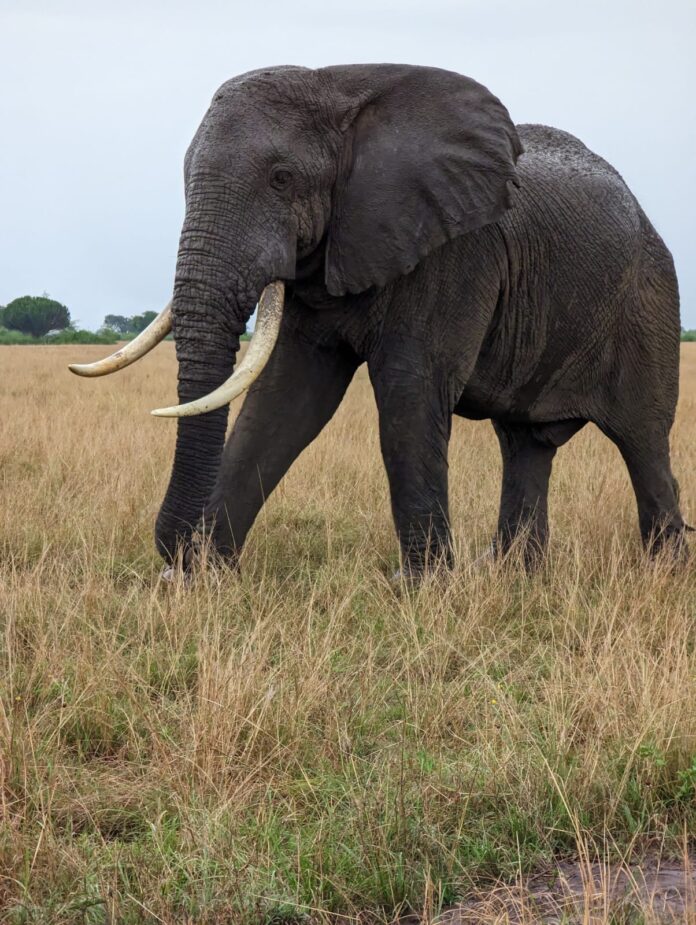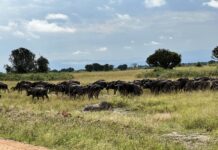Elephants are some of the most magnificent animals on the planet, and Uganda is home to a large population of these gentle giants. Uganda’s elephants are a critical part of the country’s rich biodiversity and play an important role in maintaining the delicate balance of its ecosystems.
In Uganda, there are two species of elephants: the African savanna elephant (Loxodonta africana) and the African forest elephant (Loxodonta cyclotis). The savanna elephant is the largest land animal on earth and is found in the open grasslands of Uganda’s national parks, while the forest elephant is smaller and is found in the dense forests of the country’s western region.
Elephants are social animals and live in groups, known as herds that are led by a matriarchal female. These herds can consist of up to 100 elephants, and the females will often stay with the herd for their entire lives.
Uganda’s elephants face a number of threats, including habitat loss, poaching, and human-wildlife conflict. As human populations continue to grow and encroach on elephant habitats, these magnificent animals are increasingly coming into conflict with humans, damaging crops and property.
Despite these threats, Uganda has made significant strides in elephant conservation in recent years. The country’s national parks, including Queen Elizabeth National Park and Murchison Falls National Park, are home to large elephant populations and offer visitors the opportunity to see these animals up close in their natural habitat.
Tourists can take guided game drives or boat cruises to spot elephants, and there are also opportunities for walking safaris and bird watching. In addition, visitors can learn about elephant conservation efforts in Uganda through guided tours of conservation projects and educational programs for instance the Ishasha elephant trench project (Deo’s).
Conservation efforts in Uganda have included the establishment of elephant corridors to connect fragmented habitats, the creation of community conservation areas, and the strengthening of law enforcement to combat poaching and illegal wildlife trade.
Uganda’s elephants are an important part of the country’s natural heritage, and their protection is critical for the long-term health of the country’s ecosystems. By promoting responsible tourism practices and supporting conservation efforts, visitors can help to ensure that Uganda’s elephants continue to thrive for generations to come.
Elephant Population Since 1962
Since Uganda gained independence in 1962, the country’s elephant population has undergone significant changes. In the early years after independence, elephant populations were largely stable, with an estimated 30,000 to 40,000 elephants across the country.
However, in the 1970s and 1980s, Uganda experienced political instability and civil unrest, which had a significant impact on elephant populations. Poaching and illegal wildlife trade surged during this time, fueled by the demand for ivory in international markets. As a result, Uganda’s elephant population declined rapidly, with estimates suggesting that fewer than 1,000 elephants remained in the country by the early 1990s.
In response to this crisis, the Ugandan government, along with conservation organizations and local communities, began implementing measures to protect the country’s remaining elephant populations. These efforts included strengthening law enforcement to combat poaching, establishing protected areas and wildlife corridors, and working with local communities to reduce human-elephant conflict.
Over the past few decades, these conservation efforts have shown promising results. According to the Uganda Wildlife Authority, the country’s elephant population has increased steadily since the mid-1990s, with an estimated 5,000 elephants in Uganda as of 2021.
This increase in elephant populations is a testament to the effectiveness of conservation efforts in Uganda and highlights the importance of continued investment in elephant protection and habitat conservation.






